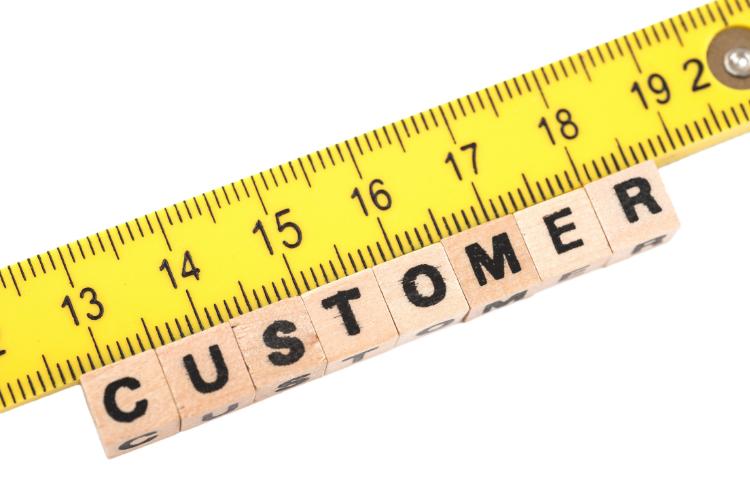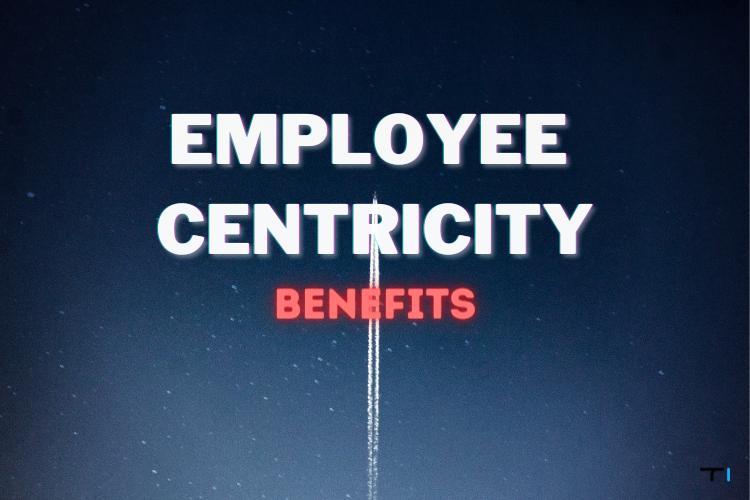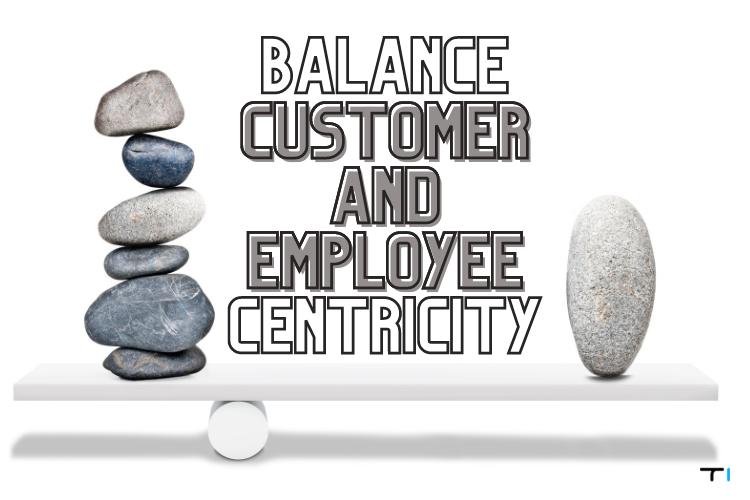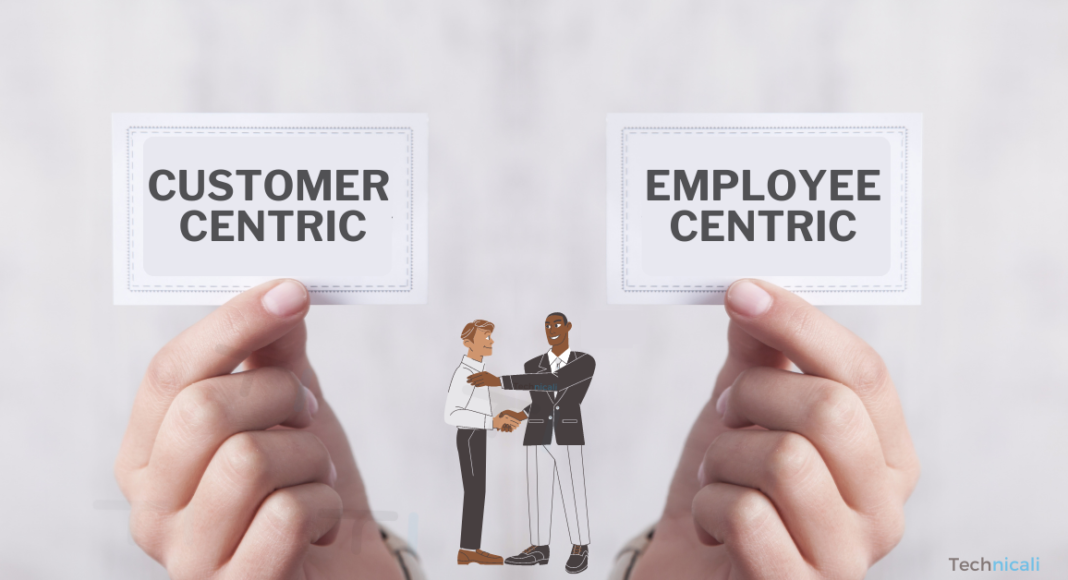When it comes to business, whether it is service-based or product-based, one question that scratches a lot is to make the company customer-centric or employee-centric.
While Customer-Centric is important, employees are the root of any company.
They are the ones who interact with customers; they are the face of the company. Thus employee centricity is critical in a business too.
While balancing both employee and customer-centricity is difficult, it’s not impossible.
On the other hand, employee-centric businesses prioritize their employees’ experience and development.
Contents
Benefits of Customer Centricity

A customer-centric business understands that its success depends on its ability to serve its customers’ needs.
The Top 5 Benefits of Customer Centricity are:
- Improved customer satisfaction: When you focus on the customer, you are more likely to understand their needs and desires your business runs around. This leads to improved customer satisfaction as you can provide them with what they want.
- Increased sales: When you focus on your customers, you are also more likely to upsell and cross-sell to them. This leads to increased sales and revenue for your business.
- Improved customer loyalty: When you focus on your customers, they are more likely to be loyal to your brand. This leads to improved customer loyalty and repeats business from them.
- Reduced marketing costs: When you focus on your customers, you are able to reduce your marketing costs as you are able to get more referrals just because they are happy.
- Reduced operational costs: When you focus on your customers, you are able to reduce your operational costs as you can streamline your processes.
How to Measure Customer Centricity in a Company:

Measuring customer centricity can help businesses track their progress and ensure that they are making decisions that will benefit their customers. There are many ways to measure customer centricity in a company.
A few key metrics you can use to measure customer centricity are:
- Customer satisfaction scores
- Net Promoter Scores
- Customer Effort Scores
- First Call Resolution Rate
- Churn Rate
Customer satisfaction scores
This metric looks at how happy customers are with the products or services. It is typically measured using surveys, although other methods (such as Net Promoter Scores) are sometimes used. Companies that consistently receive high customer satisfaction scores are typically the ones that are innovating and meeting customer needs better than their competitors. However, it is important to note that customer satisfaction is not the same as customer loyalty. A company can have high satisfaction scores without having loyal customers. Nevertheless, satisfaction scores can still be a valuable metric for assessing customer-centricity.
Net Promoter Scores
NPS measures how likely customers are to recommend a company’s products or services to others.
It’s based on the question “How likely are you to recommend our company/product/service to a friend or colleague?” with responses ranging from 0 (not at all likely) to 10 (extremely likely). Customers who respond with a score of 9-10 are considered “promoters,” loyal enthusiasts who will keep buying and referring others, helping to grow the business.
Those who respond with a score of 7-8 are “passives,” those are satisfied but unenthusiastic customers who are vulnerable to competitive offerings.
Those who respond with a score of 0-6 are “detractors.” that are unhappy customers who could damage the company’s reputation with negative word-of-mouth.
The NPS is calculated by subtracting the percentage of detractors from the percentage of promoters.
Customer Effort Scores
CES is based on how much effort the customer feels they have to put in to resolve their issue. It can also be their effort to use their product to get the desired outcome. The lower the score, the more satisfied the customer is. It is important to track this metric over time and across different channels to get an accurate idea of customer sentiment. For example, if a company sees that its Customer Effort Scores are going down on social media but not on its website, it knows that it needs to improve its online customer service. By tracking and reducing customer effort, companies can increase satisfaction and loyalty. Additionally, companies can use CES to benchmark their performance against competitors. Improving CES can be a key differentiator in a crowded marketplace.
First Call Resolution Rate
FCRR is a metric used to measure how well a company can address customer issues on the first contact. A high first call resolution rate indicates that customers are generally satisfied with the company’s ability to resolve their issues. In contrast, a low first call resolution rate indicates that customers are often dissatisfied with the company’s ability to resolve their issues. Several factors can affect first call resolution rates, such as the quality of customer service, the availability of customer support, and the skills of the customer support team. Companies need to provide excellent customer service and ensure that their customer support team is properly trained and equipped to handle customer inquiries to improve first call resolution rates.
Churn Rate
Churn rate is a metric that measures the percentage of customers who cancel or do not renew their subscription with a company. It is important to track churn rates because it can indicate customer satisfaction. If a company has a high churn rate, it may indicate poor customer service, lack of product innovation, or other issues that are causing customers to leave. On the other hand, a low churn rate may indicate that customers are happy with the company and its products. As such, measuring churn rate can be a helpful way to gauge customer satisfaction and identify areas where a company can improve.
Focusing on customers should be a priority for any business if they want to succeed long-term. Businesses can improve customer satisfaction, increase sales, and reduce marketing and operational costs by being customer-centric.
Though what about Employee Centric? Should we listen to every demand of customers and let an employee take a hit when it’s called for.
To dive into that side, let’s first discuss the benefits of Employee Centric.
Benefits of Employee Centricity

An Employee Centric workplace is one where the company’s success is dependent on its employees. This type of workplace is focused on attracting, retaining, and developing top talent.
When done correctly, employee centricity can lead to a number of benefits for both the company and its employees, including:
- Improved Employee Retention: Employees feel valued and appreciated in an employee-centric workplace. As a result, they are more likely to stay with the company for the long term.
- Reduced turnover: When you focus on your employees, they are less likely to leave your company. This leads to reduced employee turnover and saves on training costs.
- Increased Employee Engagement: Employees who feel valued and appreciated are also more likely to be engaged in their work. This leads to increased productivity and higher quality work.
- Improved Customer Service: When employees are engaged and feel valued, they are more likely to provide excellent customer service. This leads to improved customer satisfaction and loyalty.
- Increased Sales: Excellent customer service leads to increased sales. In addition, engaged and motivated employees are more likely to go above and beyond to close sales.
- Improved Employee Morale: When employees feel valued, they have a positive attitude and are more likely to enjoy coming to work. This leads to improved employee morale and a more positive environment even when it’s remote work.
Now that we’ve gone over the benefits of being customer-centric let’s take a look at the other side of how focusing on employees can help you scale your business.
How to Measure Employee Centricity in a Company:

While customer-centricity can be measured through customer satisfaction surveys and other customer-focused metrics, measuring employee-centricity can be more difficult.
Some ways to measure employee centricity in a company include:
Employee Satisfaction Surveys
By tracking employee satisfaction, employers can get a good idea of how their employees feel about their job, their team, and their company as a whole. Satisfied employees are more likely to be engaged and productive, and they are also more likely to stay with a company for the long haul. As such, tracking employee satisfaction is a valuable way to gauge the health of a business. There are a number of different ways to measure employee satisfaction, but surveys are one of the most popular methods. By surveying employees on a regular basis, companies can get an accurate picture of how satisfied their employees truly are.
Retention Rate
The employee retention rate is a metric that measures how many employees stay with a company over a period of time. This rate can be used to gauge the success of a company’s employee centricity. A high retention rate indicates that employees are happy with their job and are less likely to leave the company. This, in turn, can lead to increased productivity and profitability. On the other hand, a low retention rate may indicate that employees are unhappy with their job or the company itself. In this case, it is important to address the root causes of employee dissatisfaction in order to improve retention rates. By tracking the employee retention rate, companies can gain valuable insights into the success of their employee centricity initiatives.
Employee Turnover Rate
This metric tracks the percentage of employees who leave the company in a given period of time. A high turnover rate can signify that employees are unhappy with their work situation and are looking for new opportunities. On the other hand, a low turnover rate can indicate that employees are satisfied with their current position and are less likely to look for new jobs. While the turnover rate is not the only metric to consider when assessing employee centricity, it can provide valuable insights into the overall satisfaction of the workforce.
Productivity Levels
In any company, employee productivity levels are crucial to track. This metric can give you insight into how your employees are feeling and how engaged they are with their work. There are a number of ways to measure productivity levels, but one of the most important is to look at the amount of work that each employee is able to complete in a given period. If you see that employees are completing less work than they did in the past, it could be a sign that they are feeling disengaged or unhappy with their job. Additionally, you can ask employees to take part in surveys or rating systems that will allow you to get feedback on their experience working for your company.
Both customer centricity and employee centricity are important for businesses to focus on if they want to be successful. By being customer-centric, businesses can improve customer satisfaction, increase sales, and reduce marketing and operational costs.
Employee centricity also provides an important part and can be a blessing for both the company and its employees, including improved employee retention, increased employee engagement, and improved customer service.
No matter what method you use to measure employee centricity, it is important to make sure that you are constantly collecting feedback and making improvements based on what you learn. Though, To ensure that your business is focused on both customers and employees, it is important to measure and balance both customer centricity and employee centricity using the above key metrics.
How to Balance Customer and Employee Centricity in a Company

It can be a tug of war when things go out of hand.
Customers are Important so do employees. Human behaviors and problems are unpredictable.
We all carry our own baggage, but when it comes to customer services, it doesn’t take much time to get things out of hand when emotions run high.
The customer is not always right but is never wrong. It’s important to remember that in any business, your customers are your livelihood. Without them, you would not be in business. That being said, it’s also important to remember that your employees are the ones who interact with your customers on a daily basis. They are the ones who provide the customer service that can make or break a sale. As such, it is essential to find a balance between customer and employee centricity. But how do you find balance?
There is no one-size-fits-all answer when it comes to balancing customer and employee centricity in a business.
Every business has different operations. That’s why let’s get to basics and have a benchmark for things.
1. Define what customer centricity and employee centricity mean to your Business
The first step to finding a balance between customer and employee centricity is to define what each of these terms means to your business.
What are your goals for each? What are your priorities? Once you have a clear understanding of what each of these terms means to your business, you can begin to create a plan for how to achieve a balance between the two.
2. Communicate Your Goals
Once you have defined what customer centricity and employee centricity mean to your business, it’s important to communicate these goals to all members of your team.
Employees need to know what is expected of them and how their work affects the customer experience.
Customers need to know that they are a priority for your business and that you are working to improve their experience.
3. Train Your Employees
It’s not enough to simply tell your employees that you want them to be customer-centric. You also need to provide them with the training and resources to succeed.
There are several ways to do this, but one of the most effective is to create customer service standards and then train your employees on how to meet these standards.
Additionally, you can provide customer service training that covers topics such as handling difficult customer situations, upselling and cross-selling, follow-ups, and creating a positive customer experience.
4. Measure and Evaluate Progress
Once you have implemented changes to your customer service, it’s essential to measure and evaluate the progress you are making.
Are our customer satisfaction levels increasing? Are employees meeting your customer service standards? If not, why not? These are all important questions to ask as you work to find a balance between customer and employee centricity.
5. Make Adjustments as Needed
As you measure and evaluate your progress, you may find that you need to make adjustments to your approach. Perhaps you need to provide more training for your employees or change how you measure customer satisfaction.
Whatever the case may be, don’t be afraid to make changes as needed. The goal is to find a balance that works for your business, so be prepared to adjust the course as necessary.
There are a few tips to ensure that your business is customer-centric and employee-centric:
- Make sure that your employees are adequately trained in customer service. > This will ensure that they can provide the best possible experience to your customers.
- Encourage open communication between employees and customers. > This will help to build relationships and trust between them.
- Make sure that your customer service policies are clear and concise. > This will help to avoid misunderstandings and conflict.
- Encourage feedback from both employees and customers. > This will help you to identify areas where you can improve your customer service.
By following these tips, you can create a business focused on both its customers and its employees. Creating a balance between customer and employee centricity will help you build a successful business that provides a great customer experience and meets the needs of its employees.

What tips do you have for creating a customer-centric or employee-centric business?
Share your thoughts in the comments below!

